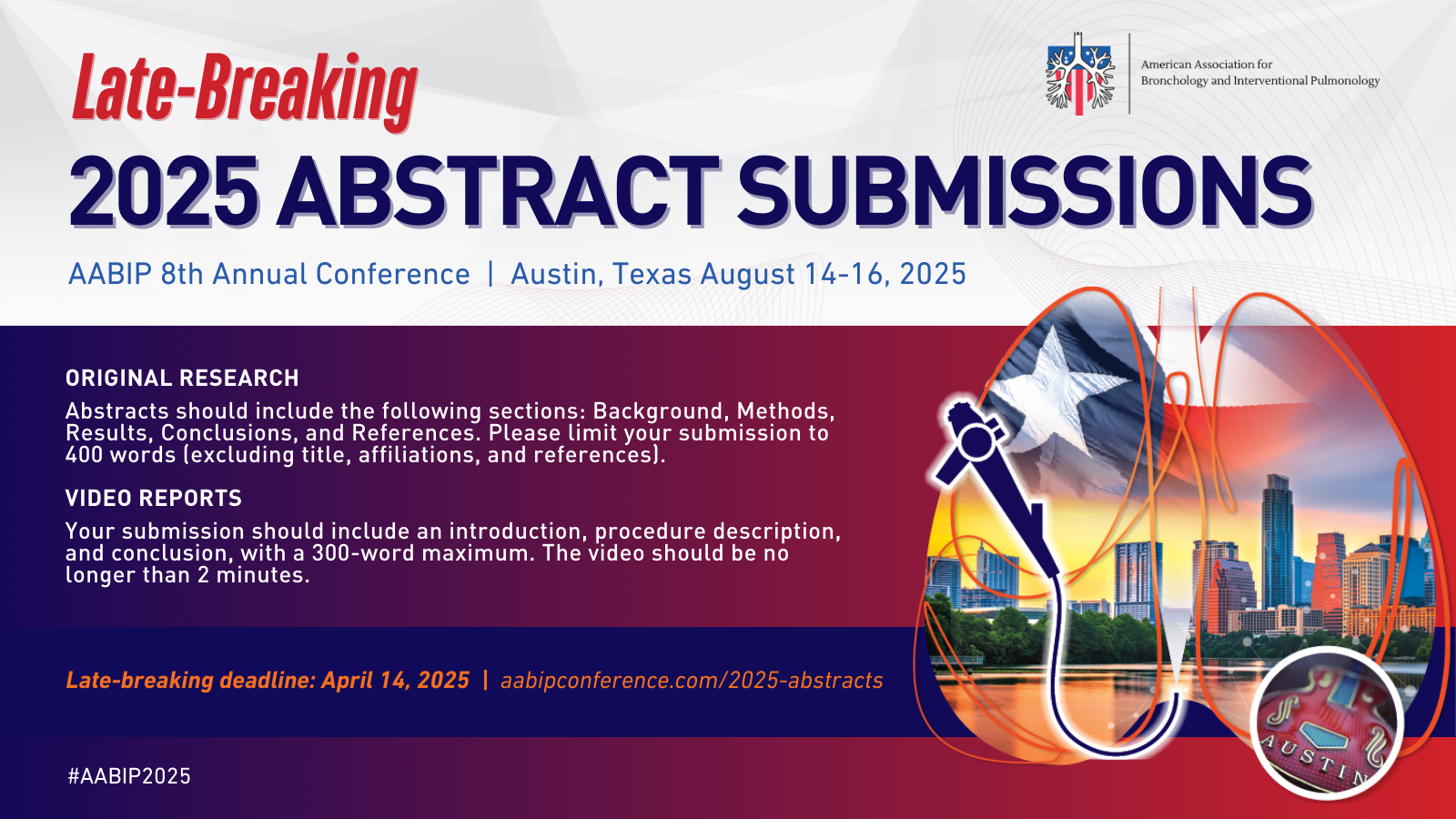Routine monitoring with pleural manometry during therapeutic large-volume thoracentesis to prevent pleural-pressure-related complications: a multicentre, single-blind randomised controlled trial
https://www.ncbi.nlm.nih.gov/pubmed/30772283
Clinical Trial
Reference: Lentz RJ, Lerner AD, Pannu JK, et al. Routine monitoring with pleural manometry during therapeutic large-volume thoracentesis to prevent pleural-pressure-related complications: a multi-centre, single-blind randomized controlled trial. Lancet Respir Med. 2019;7(5):447-455.
Background: Thoracentesis is a commonly performed pulmonary procedure with a risk of complications, albeit rare, many of which are associated with changes in pleural pressure during drainage. Various studies have been published regarding the use of pleural manometry during thoracentesis. This study investigated whether monitoring of pleural pressure with manometry during thoracentesis could protect against complications compared with patient reporting of symptoms.
PICO:
Populations:
- Adult inpatients and outpatients referred to interventional pulmonology service for therapeutic thoracentesis
- Symptomatic pleural effusions >500mL in volume as defined by various criteria:
- Excluded patients with septated or loculated effusions or if unable to sit for the procedure
Intervention:
- Standard thoracentesis procedure with patients randomized to thoracentesis guided by symptoms alone (control) versus symptom plus manometry
- Control group:
- Pleural fluid actively aspirated with a 60mL syringe
- Drainage was paused at various intervals during which patients were asked to rate their chest discomfort on a 100mm visual analog scale (VAS)
- Thoracentesis procedure was discontinued when pre-determined criteria were met
Comparison:
- Manometry group:
- End expiratory pleural pressure was measured during normal tidal breathing using a validated single use manometer at various intervals
Outcome:
- Primary outcome: No significant difference between groups
- Patient-reported overall procedural chest discomfort from the start to after the procedure measured at 5 minutes post-procedure on a 100mm VAS
- Secondary outcomes: No significant difference between groups for any secondary outcome
- Overall chest discomfort at various time points measured on a 100mm VAS
- Change in breathlessness at various time points measured by 100mm VAS and Modified Borg Scale for Dyspnea
- Volume drained
- Procedure duration
- Frequency of complete lung re-expansion
Take Home: This study found no significant difference between symptom driven versus manometry and symptom driven pleural fluid aspiration in regards to chest discomfort by VAS at the primary time point of 5 minutes post-procedure. The use of manometry to measure pleural pressures during standard thoracentesis does not seem to affect pressure-related chest discomfort.
Pleural manometry: techniques, applications, and pitfalls
Reference: Hu K, Chopra A, Huggins JT, Nanchal R. Pleural manometry: techniques, applications, and pitfalls. J Thorac Dis. 2020;12(5):2759-2770.
Summary: This review provides a summary of manometry techniques and applications of pleural manometry in large volume thoracentesis, identifying trapped lung, pleurodesis, and pneumothorax. The review provides an up-to-date summary of the current published studies on pleural manometry.
The Impact of Gravity vs Suction-driven Therapeutic Thoracentesis on Pressure-related Complications: The GRAVITAS Multicenter Randomized Controlled Trial
https://pubmed.ncbi.nlm.nih.gov/31711990/
Clinical Trial
Reference: Lentz R, Shojaee S, Grosu HB, et al. Gravity Vs Suction-Driven Therapeutic Thoracentesis to Prevent Pleural-Pressure-Related Complications: The Gravitas Multicenter Randomized Controlled Trial. CHEST 2019; 156(4).
Background: Thoracentesis can be performed via various methods and is not without potential complications. These complications are primarily related to the generation of negative pressure during the procedure. This trial investigated whether pleural fluid drainage via gravity protected against negative pressure related complications compared with active pleural fluid aspiration.
PICO:
- Populations:Randomized 142 patients with large free-flowing pleural effusions estimated >=500mL 1:1 into both thoracentesis groups
Intervention:
- Therapeutic thoracentesis via active aspiration
- Thoracentesis procedure was continued until all fluid was drained or until persistent chest discomfort, intractable cough or other complication developed
Comparison:
- Therapeutic thoracentesis via gravity drainage
Outcome:
- Primary outcome: No difference in overall procedural chest discomfort measured at 5-minutes post-procedure (P=0.17)
- Secondary outcomes: No difference in chest discomfort or dyspnea between the two groups
- Comparable fluid amounts were drained between the two groups but procedure duration was significantly longer in the gravity drainage arm (P<0.001)
Take Home: In regards to patient chest discomfort and dyspnea, therapeutic thoracentesis performed via active aspiration and gravity drainage both appear to be equivalent. No significant complications were observed in this study in either group. Active aspiration does require less procedural time than gravity drainage. The method chosen for drainage during therapeutic thoracentesis should be determine based on available equipment, proceduralist expertise and patient clinical conditions.
Safety and Tolerability of Vacuum Versus Manual Drainage During Thoracentesis: A Randomized Trial
https://pubmed.ncbi.nlm.nih.gov/30433893/
Clinical Trial
Reference: Senitko M, Ray AS, Murphy TE, et al. Safety and tolerability of vacuum versus manual drainage during thoracentesis: a randomized trial. J Bronchol Interven Pulmonol 2019; 26(3):166-171.
Background: There are various methods for draining pleural fluid during a therapeutic thoracentesis. This study sought to compare the safety, patient pain level and time for drainage via vacuum or manual aspiration.
PICO:
Populations:
- Randomized 100 patients receiving ultrasound guided, unilateral therapeutic thoracentesis from December 2015 through September 2017
Intervention:
- Therapeutic thoracentesis via vacuum drainage
- Pleural effusion was drained completely or until refractory symptoms developed
Comparison:
- Therapeutic thoracentesis via manual aspiration
Outcome:
- Primary outcomes: Rates of all-cause complications (5 vs. 0) and early termination (8 vs. 1) were higher in the vacuum group when compared to the manual aspiration group (P=0.03 and P=0.018 respectively)
- Complications included: pneumothorax, surgically treated hemothorax with subsequent death and re-expansion pulmonary edema causing respiratory failure
- Secondary outcomes: Vacuum group experienced greater pain during drainage (P<0.05), shorter drainage time (P<0.01), no association with volume removed (P>0.05) and lower inverse rate of removal (P=<0.01)
Take Home: Vacuum drainage of pleural fluid during therapeutic thoracentesis requires less time than manual aspiration, but was associated with higher rates of complications, early termination of procedure and increased pain in this small study. Careful attention should be paid to patient symptoms during therapeutic thoracentesis, regardless of the drainage method being used.




